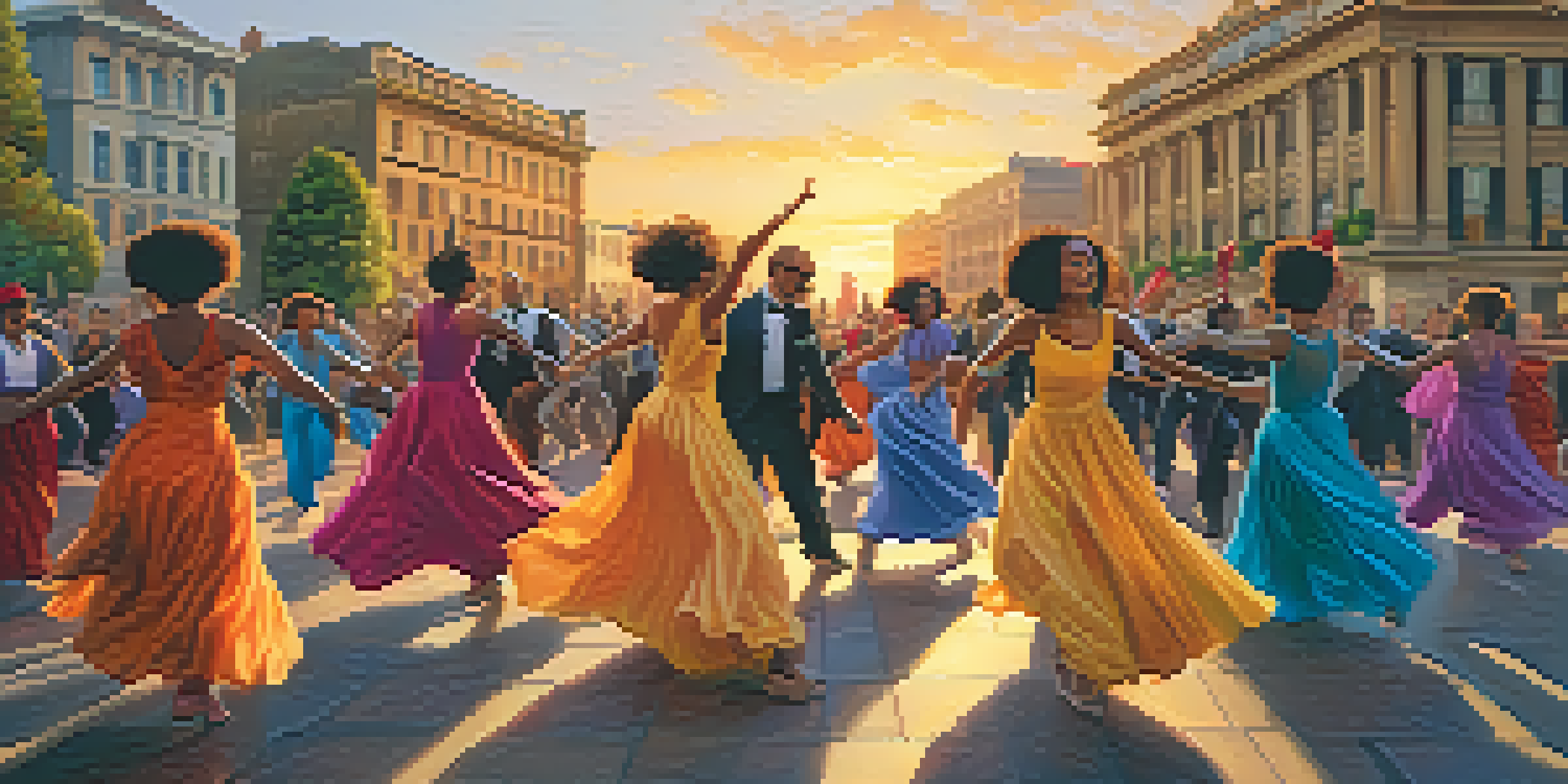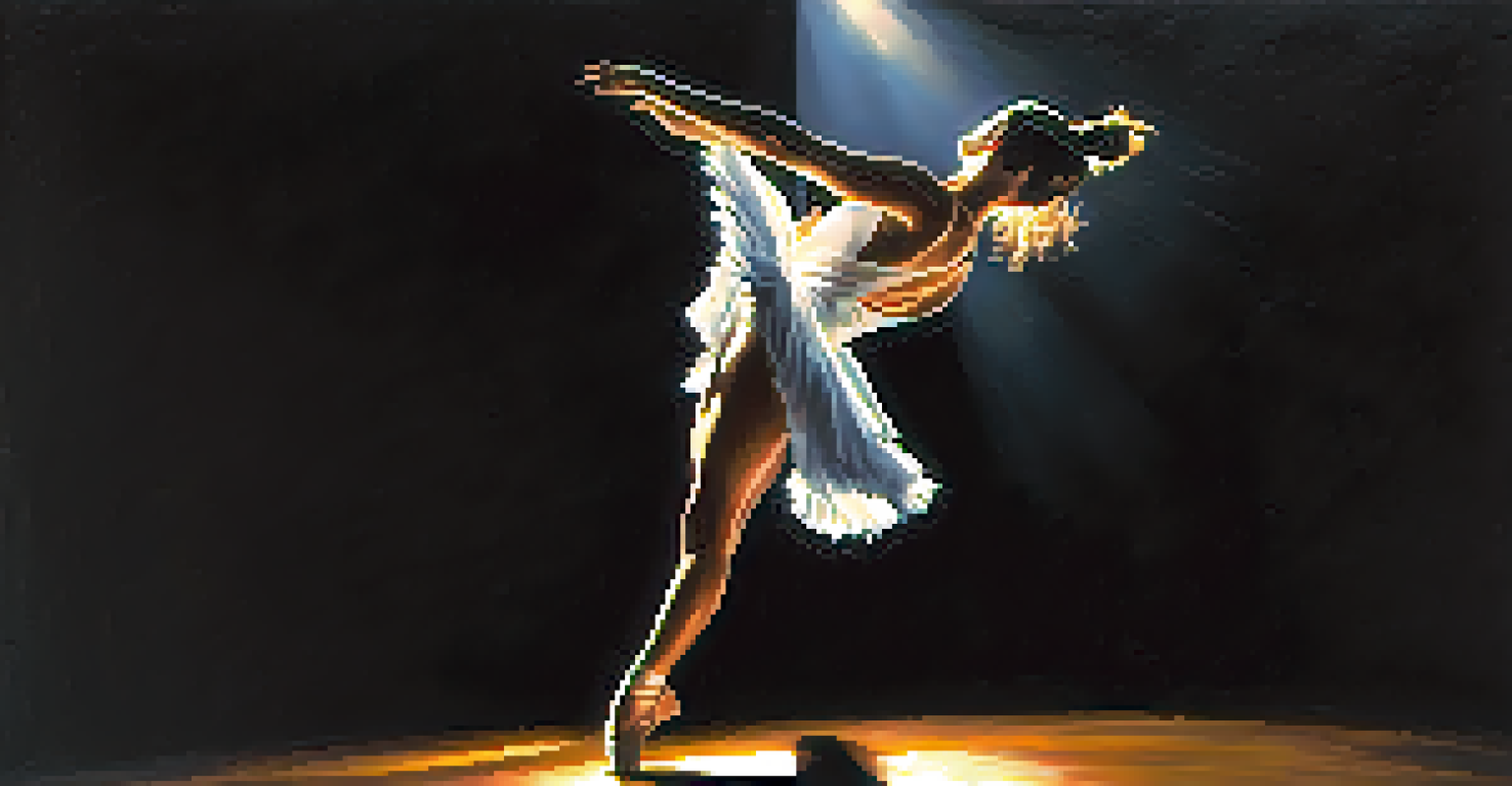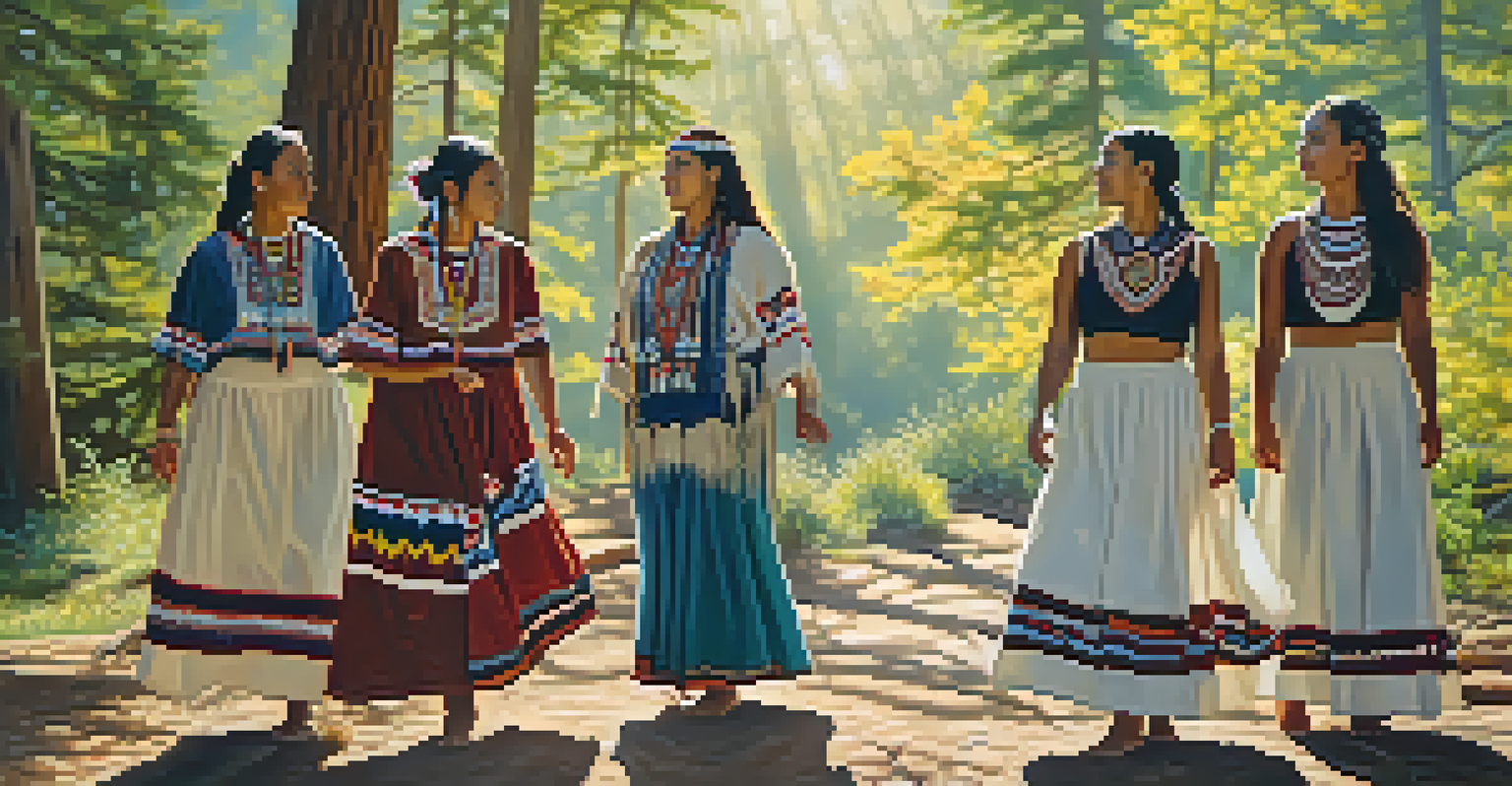Choreography as Protest: Historical Context and Impact

Understanding Choreography as a Form of Protest
Choreography, often seen as the art of dance, can also serve as a powerful form of protest. It allows individuals to express dissent, challenge societal norms, and advocate for change through movement. Just as painters wield brushes and writers craft words, dancers use their bodies to communicate messages that words sometimes cannot convey.
Dance is the hidden language of the soul.
Throughout history, various movements have harnessed the power of dance to amplify their voices. From the civil rights movement in the United States to anti-apartheid protests in South Africa, dance has been a means of rallying supporters and drawing attention to injustices. This rich history shows that choreography can evoke emotions and provoke thought, making it a unique tool for social change.
Moreover, the beauty of choreography as protest lies in its versatility. It can be spontaneous or meticulously planned, performed in public squares or on stages. This adaptability allows it to reach diverse audiences and resonate across different cultures and contexts.
Historical Examples of Dance as Protest
One of the most notable examples of choreography as protest occurred during the civil rights movement in the 1960s. Groups like the Black Panther Party used dance to express unity and resilience in the face of oppression. Their performances were not just entertainment but a declaration of strength and a call for justice.

Another powerful historical instance is the dance protests in Argentina during the Dirty War. Mothers of the Plaza de Mayo famously danced in circles, symbolizing their search for justice for their disappeared children. This choreography, filled with emotional weight, became a poignant symbol of resistance against tyranny and an enduring legacy of the fight for human rights.
Dance as a Voice for Change
Choreography serves as a powerful form of protest, allowing individuals to express dissent and advocate for social change through movement.
These examples illustrate how dance transcends mere physical movement. It becomes a collective memory, a way for communities to remember their struggles and celebrate their resilience. Each step taken in protest is a step toward healing and awareness.
The Role of Modern Dance in Social Movements
In contemporary times, modern dance continues to play a significant role in social movements. Choreographers often use their platforms to address pressing issues such as climate change, racial injustice, and gender equality. This engagement not only brings attention to these issues but also inspires others to join the cause through the universal language of dance.
In every job that must be done, there is an element of fun. You find the fun, and snap! The job’s a game.
For instance, in 2016, the dance community rallied around the Black Lives Matter movement, with performers creating pieces that highlighted systemic racism and police brutality. These performances created a space for dialogue and reflection, encouraging audiences to engage with the issues on a deeper level. Such choreography serves as a reminder that art can provoke thought and action.
Additionally, social media has transformed how dance is used as a form of protest. Choreography can now go viral, reaching audiences far beyond local communities. This global connectivity amplifies messages and fosters solidarity among diverse groups advocating for change.
Choreography and Cultural Identity in Protest
Choreography as protest often intersects with cultural identity, allowing marginalized communities to reclaim their narratives. Dance can serve as a medium for expressing cultural heritage while simultaneously addressing social injustices. This blending of identity and activism empowers individuals to take pride in their roots while fighting for their rights.
For example, the Native American community has used traditional dances to protest against land rights violations and environmental issues. These dances not only celebrate cultural traditions but also assert the community's ongoing struggle for sovereignty and recognition. Here, choreography becomes a bridge connecting the past to the present, embedding activism within cultural expression.
Historical Significance of Dance
Throughout history, movements like the civil rights movement and the Dirty War in Argentina have utilized dance to rally support and symbolize resistance against injustice.
In this way, choreography enriches the protest landscape by adding layers of meaning and context. It showcases the diverse experiences of different communities, making the struggle for justice a collective narrative rather than an isolated one.
The Emotional Impact of Dance in Protests
One of the most striking aspects of choreography as protest is its emotional impact. Dance has the unique ability to evoke feelings of joy, sorrow, anger, and hope simultaneously. This emotional resonance can draw people in, helping them to connect with the issues at hand on a personal level.
When dancers take to the streets or the stage, they embody the struggles and aspirations of their communities. Their movements can inspire empathy and understanding, reminding us of our shared humanity. For instance, a choreographed piece addressing refugee experiences can invite audiences to feel the weight of displacement, fostering compassion and action.
Furthermore, the act of dancing in protest can be cathartic for both performers and spectators. It allows for the expression of pent-up emotions and a release of tension, creating a sense of community and shared purpose. This emotional connection is a vital aspect of the healing process within movements advocating for change.
The Future of Choreography as a Protest Tool
As we move forward, the future of choreography in protests looks promising. With technological advancements and the growing influence of social media, choreographers can reach wider audiences and mobilize support more effectively than ever before. This evolution presents exciting opportunities for innovative expressions of protest through dance.
Moreover, emerging artists are increasingly blending different dance styles and genres to create unique forms of protest art. This fusion not only reflects the diversity of contemporary society but also challenges traditional notions of dance and activism. The creativity in choreography can inspire new generations to engage in social movements, reminding us that there is no singular way to protest.
Modern Dance and Social Issues
In contemporary times, modern dance addresses pressing issues such as climate change and racial injustice, inspiring audiences to engage with these causes.
Ultimately, choreography as protest will continue to evolve, adapting to the changing political and social landscapes. As long as there are injustices to address and stories to tell, the dance floor will remain an essential stage for activism.
Conclusion: The Enduring Power of Dance in Activism
In conclusion, choreography as protest is a powerful testament to the resilience and creativity of individuals and communities fighting for change. Its historical roots and modern applications underscore the unique ability of dance to convey complex messages and emotions. As we reflect on the past and look toward the future, it's clear that dance will continue to play a vital role in activism.
The art of choreography transcends cultural and generational boundaries, uniting people in their struggles and aspirations. It serves as a reminder that while the world may be fraught with challenges, there is beauty in the fight for justice and equality. Each performance, each protest, and each step taken in solidarity contributes to a larger narrative of hope and change.

As we embrace the enduring power of dance in activism, we encourage everyone to recognize and support the choreographers and dancers who use their art to inspire action and foster awareness. Dance is not just an art form; it is a movement—a movement for change, for unity, and for a better tomorrow.